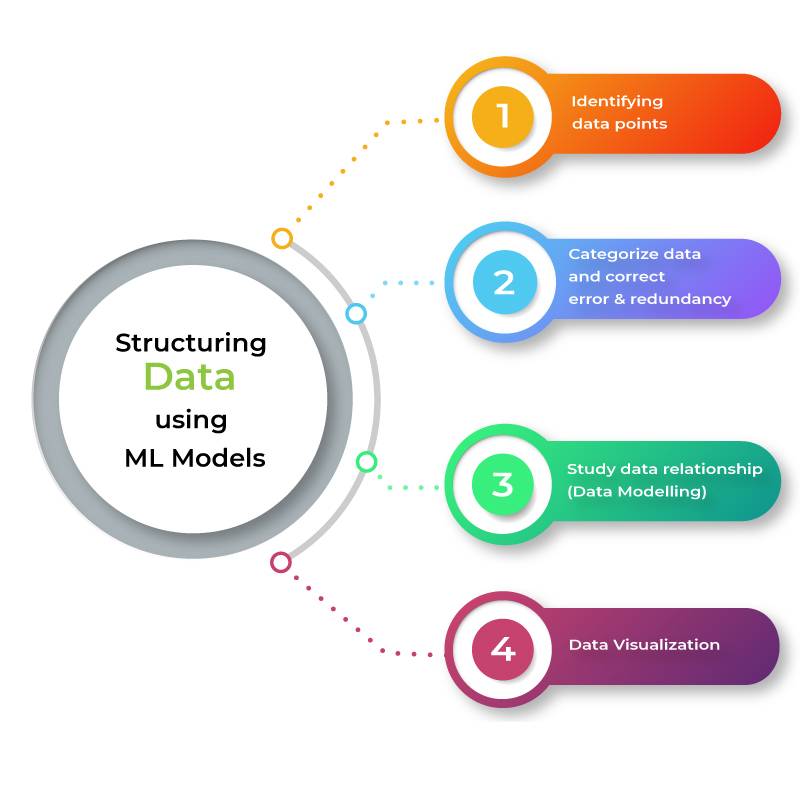Digital Transformation: Structuring the unstructured data using AI and ML

Let Artificial Intelligence take precedence
Digital transformation is expected to grow exponentially in the next 2-3 years as companies have started to experience the need for adapting it and believe that they are already late in the competition. Adopting digital transformation helps them to become adaptable to changes, exceeding customer expectations, maximizing commercial opportunities, and reducing risks.


We have a lot of unstructured data around us, data gathered from shopping online, interactions, study, all done through modern channels of communication like social media. This data is unstructured and vague as it provides very little information for analysis, it is thus required to have this data converted to structured data.
Companies must predict customer needs and try to stay ahead of customer expectations if they have to be in the business. Leaders within companies have to optimize the experience of customers and enhance outcomes across multiple channels for business, reducing gaps between people, information and systems. It is essential that companies focus on the ‘core element’ within their business that leads to revenue rather than making revenue their goal. It is essential that each role within an organization is clear and members understand their objectives for making the digital transformation strategy a success, making sustainable and maximum impact.
Now AI and cognitive technologies support 40% of all digital transformation initiatives. It is essential that organizations understand the importance and adopt the right technology consultants who can guide them to this innovation. It is also essential that the right tools be deployed that could understand the unstructured data lying within organizations and convert them into meaningful information for timely analysis and decision making.
How to convert unstructured data to structured data for analysis and insights?
For companies to adopt digital transformation and make use of the unstructured data, they must first set goals for their organization. After the goals are set, we could create Machine Learning models to identify data points that are important, in line with our goals and then prioritizing tasks that derive insights from unstructured data converting to structured data. For this to be successful, data important to the business goal is first tagged and post this the ML model must be made efficient by identifying the broad errors in the data and correcting errors. Once the Machine Learning model is trained sufficiently and becomes efficient, the effort becomes less. Post removing errors and redundancies, relationships are derived within data and proper data modeling is done. Once this data is structured, insights could be derived for useful decision making using data visualization techniques.


We believe that digital transformation starts within the organization, this happens by organizing different sessions where the team members can share their views on utilizing technologies to resolve business impacts, exchange skills and information all enabled to make the organization function as a single business unit. It is also essential to equip your team with the right resources, tools, and courses to upskill them. Avoiding skill gaps is the core to the digital transformation strategy.
With the inclusion of AI and ML and analyzing the insights derived by structuring the unstructured data, it will enable organizations to enhance the existing products, increase the efficiency of the internal processes and enable informed decision making. Educating customers on the advantages that digital transformation would bring to their enterprises by integrating AI into existing processes was an initiative we took to implement changes.
Upon implementing AI within the organizations, our customers were able to:
A: Elevate the experience of our customers by delivering more personalized and meaningful conversations that were tailored to fit their specific requirements. Our AI solutions help customers with extracting actionable insights that help our customers understand what their end-users think of their products and then better serve them.
B: Handle monotonous, repetitive activities and making the resources work more efficiently. Many repetitive tasks within organizations can be automated using Robotic Process Automation to help resources focus on their core activities thus enabling the idea of digital transformation.
C: Manage security in a better way through Machine Learning. We understand that automated and intelligent systems can be made more reliable where people can often make mistakes.
Click here to learn more about the software development solutions we offer.